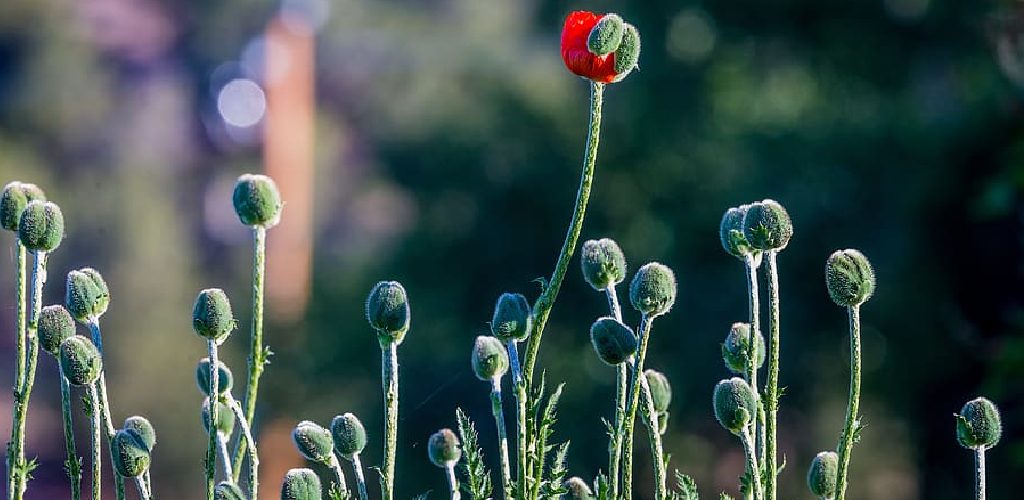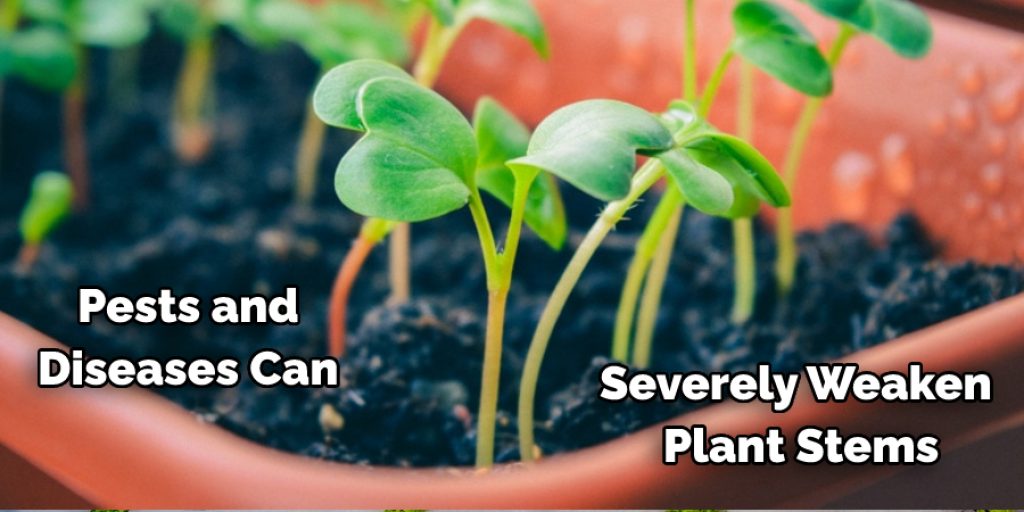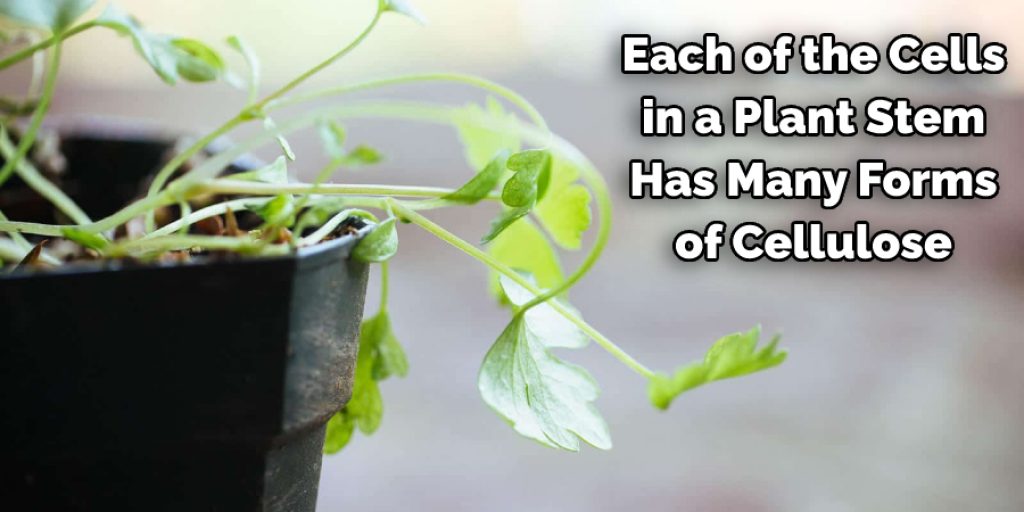How to Make Plant Stems Stronger
Making plant stems stronger is a challenge that many gardeners face. There are several methods to strengthen your plants, but not all of them apply to every type of plant. This blog post will explore how you can make your plants more robust and durable.
This article will guide you through the process of how to make plant stems stronger. Plant stems are a vital component of plants that allow them to grow and expand. However, if your plants have weak, drooping stems, they may not grow as well as they could. This blog post will show you how to strengthen those delicate little plants’ stems so they can thrive!

Seven Reasons Why You Need to Make Plant Stems Stronger:
There are many benefits to making plant stems stronger:
1. They’ll be more visually appealing, and you’ll get a better yield, making your plants look more attractive and healthy.
2. Well-developed roots cause the plant to produce bigger yields since strong roots mean that the plant has good access to water and nutrients.
3. If you want to know if your plant stems are strong, you can test them before you even plant them. This way, you won’t have to waste time caring for a plant that looks healthy but doesn’t have the roots to support it.
4. Stems that are too weak will keep other parts of your plant from growing as well as they should, so even if your stems start strong, you’ll never reach your full potential unless they remain that way.
5. Too thin Stems may not handle water pressure, forcing the plant to wilt, and adjusting its internal pressure can help prevent wilting.
6. Stems will retain more moisture than leaves and branches, making them an effective way to tell if your plants need water, and they’re the best place for the plant to absorb nutrients.
7. Stems that are too strong can prevent buds from opening up and getting air into them, so you’ll want to find just the right amount of strength for your plants’ stems (but not too weak).
10 Ways on How to Make Plant Stems Stronger:
1. Use Support.
Yes, it’s obvious, but if you want a more sturdy stem, use some support. This is especially important in high humidity climates where the plant may be more likely to collapse under its weight or without any heavy bloom clusters on its top.
2. Provide Proper Air Circulation.
It’s not good enough to provide support. Plant stems and their connection with the root system can be susceptible to disease and infestations without proper air circulation and movement. So, allow for plenty of airflow between your plants so they can dry out more quickly after watering or rainstorms. This will help prevent bacterial wilt, gray mold, downy mildew, and even powdery mildew.
3. Prune Weak Branches.
This is a good practice even if your plant doesn’t seem to have any weak branches. In any case, it’s better to get rid of the ones you don’t want before they even develop into an issue rather than wait for one to cause problems.
4. Use Proper pH Levels in the soil.
Plants usually have a pH preference, so the pH of your soil should match up with their needs. In cases where it doesn’t, you can use some acidifying fertilizer to help bring the levels closer to what they prefer. Also, avoid over-fertilizing as this can adversely affect plant stems; mainly skeletal growth and weak stems, both of which make plants more susceptible to disease.
5. Water and Fertilize Regularly.
Make sure you’re keeping your plants well watered and fertilized so they have the nutrients necessary to grow strong stems. This way, you’ll be less likely to see them collapse under their weight or from a heavy fruit load as they continue growing upwards.
6. Control and Prevent Pests and Diseases.
Pests and diseases can severely weaken plant stems, so make sure to control them by removing any affected leaves or branches as soon as you notice them. Also, try using organic pesticides such as neem oil or pyrethrin to help prevent future infections.

7. Control the Direction of Growth.
This can be done by pruning and tying down. Prune branches that shoot out horizontally and tie them down to their stake with twine, wire, or anything you might have on hand will ensure that the plant energy goes into vertical growth instead of horizontal.
8. Get the Right Soil.
The soil stems plant stems they’re planted in. Your plants will not grow strong if you water them with nutrient-poor water or into poor soil that drains poorly and has low nutritional value. Get the proper diet for your plants’ needs before expecting them to grow well.
9. Provide Good Drainage.
This means having good soil with lots of room for drainage and airflow, which you can achieve by mixing gravel or sand into your potting mix. It also means avoiding overwatering so that the roots don’t drown in a pool of water and rot. Remember these things when watering so that your plants have better stems.
10. Spread Out Heavy Fruit Loads.
This is to help prevent the stems from snapping when they support a heavy fruit load after flowering, such as in tomatoes and peppers. Just make sure you keep up with pruning if your plants want to shoot out lots of branches instead of growing upwards.
By learning how to make plant stems stronger, you’ll be able to grow healthier plants with more resistance to pests and diseases. You’ll also notice a decrease in the number of plants that collapse throughout the growing season.
You Can Check It Out to Preserve a Hawaiian Lei
Some Tips and Suggestions:
1. Take care of your plant. Without proper care, the stem will be weak.
2. All stems are different, so there’s no exact way to make them stronger, but many methods have been proven to work by others.
3. Plants need water to live and grow. If you’re not watering yours enough, it can lead to a weaker stem.
4. You might want to prune your plant or give it a rest period between the growth and flowering stages.
5. Praying mantises feed on other insects that can damage plants, so your plants can grow more robust stems if you have them around.
6. Some plants require more support than others; if yours is drooping, help it out by giving it some support or tying it up to something.
7. Make sure fresh air and sunlight can get through your plant’s foliage so that they can also grow stronger stems and leaves.
You Can Check It Out to Clone a Pepper Plant
What Causes Plant Stems To Become Weak?
Each cell in a plant stem has many forms of cellulose, an organic polymer known to be strong enough to make paper. However, when heated, it loses this strength and becomes flaccid. While most plants wouldn’t survive if their stems did not bend or sway with the wind, some can still maintain their upright position due to particular breeding.

However, these plants’ properties tend to be less flexible and, therefore, more vulnerable at higher temperatures. Soil may also contain heavy metals that make the plant stems too rigid for support, leading to breaking or splitting.
Improper bending or rotating of a stem can also lead to stem splitting, which is why it is important to note when turning a houseplant so that the stem does not have a chance of being too close to a window or cleansing with water.
What Will Happen if the Stem of a Plant Is Weak?
When a plant stem is weak, there’s a chance that it will snap under the weight of the fruit and vegetables on top of it. As a result, the fruit and vegetables will essentially fall to the ground and rot where they sit. Also, if you’re trying to grow tall plants such as corn or sunflowers, you don’t want them to fall over when they get tall so that a weak stem won’t hold the weight of its fruit and vegetables.
If the plant stem is weak, it won’t support the tension of pulling itself upward and will just droop downward. This will make it less aesthetically pleasing and prevent the fruit from growing to the height you want.
Conclusion:
In summary, plant stems are strong and resilient as long as the woody tissue is not damaged. If your plant’s stem has been broken or cut, you should use a moist paper towel to wrap it in place for two days before re-potting. However, if damage occurs from frostbite, then there may be no way of saving the once healthy-looking stalk.
You can prevent this type of cold injury by placing a bucket over the pot during winter when temperatures drop below 20 degrees Fahrenheit at night. However, once these connections break down, then decay sets in and can lead to death if not appropriately managed with treatment options such as pruning techniques used during winter months when growth slows so fewer moisture needs are expended on maintenance efforts like watering. We hope this blog post on how to make plant stems stronger has been helpful. Let us know your thoughts.




